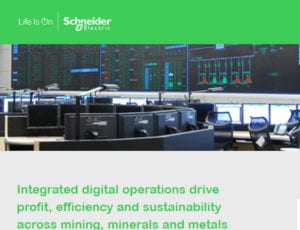Empower to workforce to drive a cultural shift
Any viable Mine Digitization strategy should also consider the human aspect of how digitalization will impact workers and employees. Digitalization is a cultural issue as much as it is a technology issue. The hearts and minds of workers are only won when the proposed changes amount to facilitation of jobs. Job specific information must be easy to access and easy to interpret. In addition, some workers may fear that new technologies may render their roles obsolete. In truth, some traditional roles will require realignment, but the new technologies will also create new roles and opportunities within mining, minerals and metals organizations. Automation and digitalization cannot survive without a human interface at this stage.
The workforce culture will shift from a siloed mentality to one of sharing and collaboration. All phases of the worker activity chain ̶ planning, scheduling, production management and asset management ̶ will be impacted as digital tools break down traditional barriers.
By 2025, 75% of the global workforce will be millennials. As increasing numbers of employees retire, this gender diverse new pool of workers will need to work with tools that are intuitive and familiar, so that tribal knowledge of operations is retained. The deployment of innovative simulation-based training tools can be expanded to quickly improve workforce capabilities. Virtual reality training simulators, for example, can help to accelerate training times by up to 50% and help the new operators to secure higher uptime operations by reducing risk of human error.
One large global mining and metals corporation recently deployed an integrated operations center to centrally manage 13 mines, three ports and one of the world’s largest privately-owned rail networks. Operations managers can use cameras, radios, and microphones from their desks thousands of kilometers away to communicate directly to on site staff. The vision for the operations center was to make certain that all staff are multiskilled and embrace collaboration in order to drive productivity. With their people now equipped with the proper tools for optimizing a complex integrated network, the senior management of the firm are realizing a quantum leap in mining efficiency and cost savings.
 As mining, minerals and metals enterprises across the globe accelerate efforts to gain a competitive advantage through digitization, an Integrated Operations Management business strategy, can set the foundation for a differentiating factor on these businesses’ competitive imperatives, today and tomorrow. Learn more about EcoStruxure for Mining, Minerals and Metals, as the open and interoperable platform that enables an Integrated Operations Management approach.
As mining, minerals and metals enterprises across the globe accelerate efforts to gain a competitive advantage through digitization, an Integrated Operations Management business strategy, can set the foundation for a differentiating factor on these businesses’ competitive imperatives, today and tomorrow. Learn more about EcoStruxure for Mining, Minerals and Metals, as the open and interoperable platform that enables an Integrated Operations Management approach.